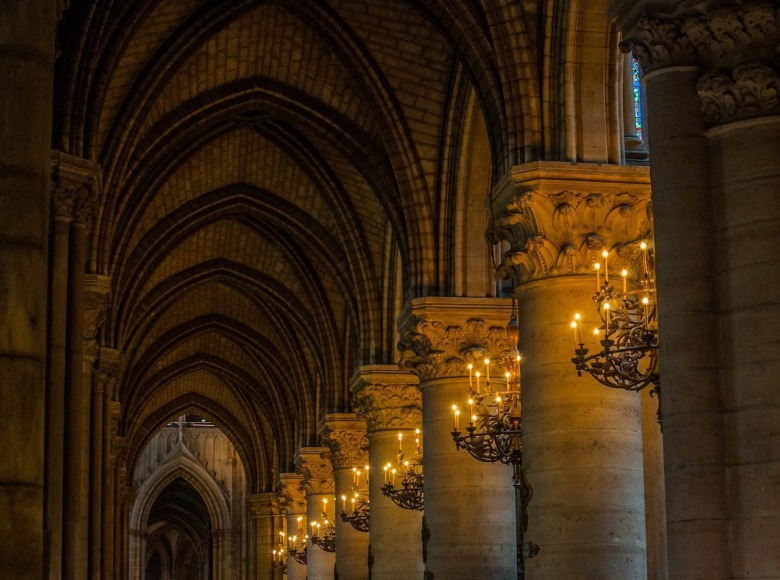
SETH M. EHORN | WHEATON COLLEGE
There it was—the most beautiful cathedral I had ever seen. But not just beautiful. Enormous! It was the summer of 2011, and I was spending the month of July studying French in Paris. As part of my experience, I decided to visit Cathedral Notre Dame and attend one of its daily mass services. The exterior of the building was massive. The interior, somehow, seemed even larger than the outside—a bit like the Tardis of Doctor Who fame. What was reinforced for me during this visit was that the experience of visiting a location (including getting to know how a site functions) had a profound effect on me. It was easy to think of it as an important church without having any real sense of its significance, scale, or functions. After visiting Notre Dame, I could not help but think about the site differently. That sense of profundity has not left me. Indeed, that experience has caused me to reflect on how I interact with material culture and how it shapes my understanding of current events, history, and even literature.
Fast-forward several years, and now I find myself in a classroom teaching undergraduate students in a course on “New Testament Literature and Interpretation.” I remain fascinated by the material world of early Christians (e.g., manuscripts, archaeology), and I try to bring this aspect into my teaching whenever possible. But how do I bring my students to “Notre Dame” along with me?
In my quest to help students understand the material world of early Judaism and early Christianity better, I developed an exercise to help them visualize the Herodian Temple and understand how it might have functioned for typical Jewish visitors. The exercise draws on several resources and involves several steps. First, students download the application “Virtual New Testament” on their compatible electronic devices. This application, developed by Brigham Young University, is a virtual model of the Herodian Temple that allows users to walk through the temple in first-person style, much like a video game. At first, students are invited to simply explore and discover.
Second, I ask students to read a recent article (2016) that appeared on the Biblical Archaeology Society’s (BAS) website that describes the floor of the Temple Mount. Here the students continue to visualize and now actually see some of the beautiful features of the temple. Students are also learning that websites like BAS exist, and they tend to spend time exploring its content.
Third, I ask students to read a selection from E. P. Sanders’s Judaism: Practice and Belief 63 BCE – 66 CE (London: SCM Press, 1992). The reading helps students understand some of the lived experiences of ancient Jews in relation to the material reality of the temple. Within the text of the reading, my own annotations coach them about various locations they should stop and find in the Virtual New Testament app as they make their way through the reading.
Finally, after exploring the temple, learning a little about archaeology, and reading from Sanders, I ask students to reflect on what they have learned. They are invited to share their responses (“What surprised you?”) and to consider how they might think differently about the New Testament in light of their exploration. The exercise forms the basis for a class session in which we discuss the role of the temple in Second Temple Judaism.
The entire exercise is available as a PDF at DidaktikosJournal.com/Temple. It can be adapted to suit the needs of the class.
SETH M. EHORN’S research and teaching are focused on situating the New Testament within its literary, historical, and social contexts.
This article was first published in Didaktikos: Journal of Theological Education. Subscriptions are free for theological faculty. Sign up today:

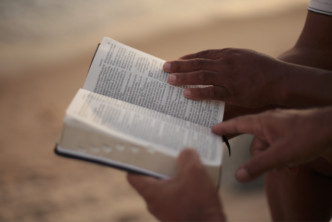
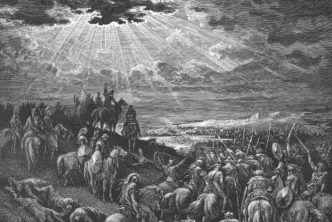
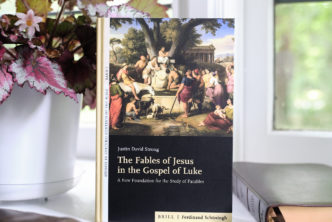
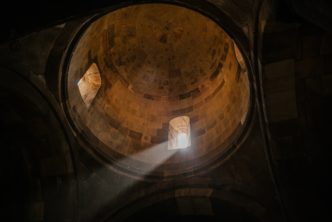
I’ve always been intrigued with Jesus calling Herod’s Temple, MY FATHER’s House!
One of the pitfalls of indulging in personal visualization of artifacts such as the Herod’s Temple and Notre Dame is a materialist orientation of the things of God. Jesus in Matthew 24 specifically said that the temple would be torn down. That generation of religious leaders was corrupt. Just so, Notre Dame is a product of the Middle Ages. The church leadership during that lengthy era was materialist, saw some corruption early, became much more so in its attempt at hegemony of Europe during the High Middle Ages, and continued down the path of corruption to the end of the era. If the leaders at the end of the time had not been so stiff-necked in their ways, Martin Luther would have been successful at reform from within instead of founding a new movement. (Not making a judgment here; just noting the potential historical alternative.)
The point here is that the main focus for the Christian is suppose to be a relationship with God as a disciple of Jesus Christ in the daily leaning on and following the lead of the Holy Spirit. Jesus told the woman at the well that God is Spirit, and he looks for those who would worship Him in Spirit and in Truth. Thus, the New Covenant is a matter of heart in an active personal relationship with God. It was during the Orthodox era, the Middle Ages, and the Protestant Reformation, that law and politics transitioned the church away from a personal dependency on the Holy Spirit to an external, legal, and political orientation. That entire tri-period segment of church history ended in the horrible Thirty Years War, which is a powerful statement against external religiosity versus an internal heart for God and Christ. The book of Acts–the earliest days of the church–stands as an indictment of those many centuries.
In all our studies, may we all come to the reality that the material artifacts have their place, but indulgent gripping of the mind and heart by those same material artifacts is dangerous to one’s walk with God.
I think that the decline of christianity began when it became the religion of the the empire and the powerful rather than the powerless. The story parallels the story of judaism till the time of Jesus.